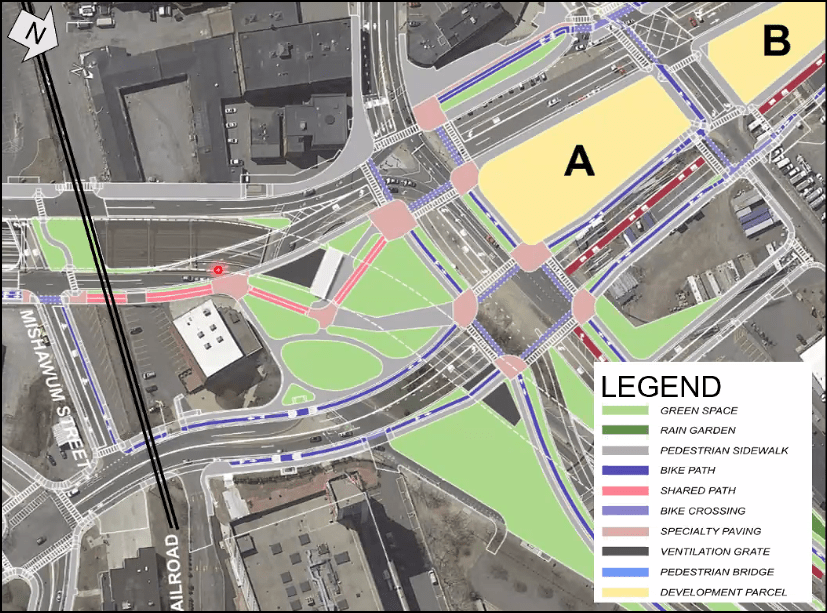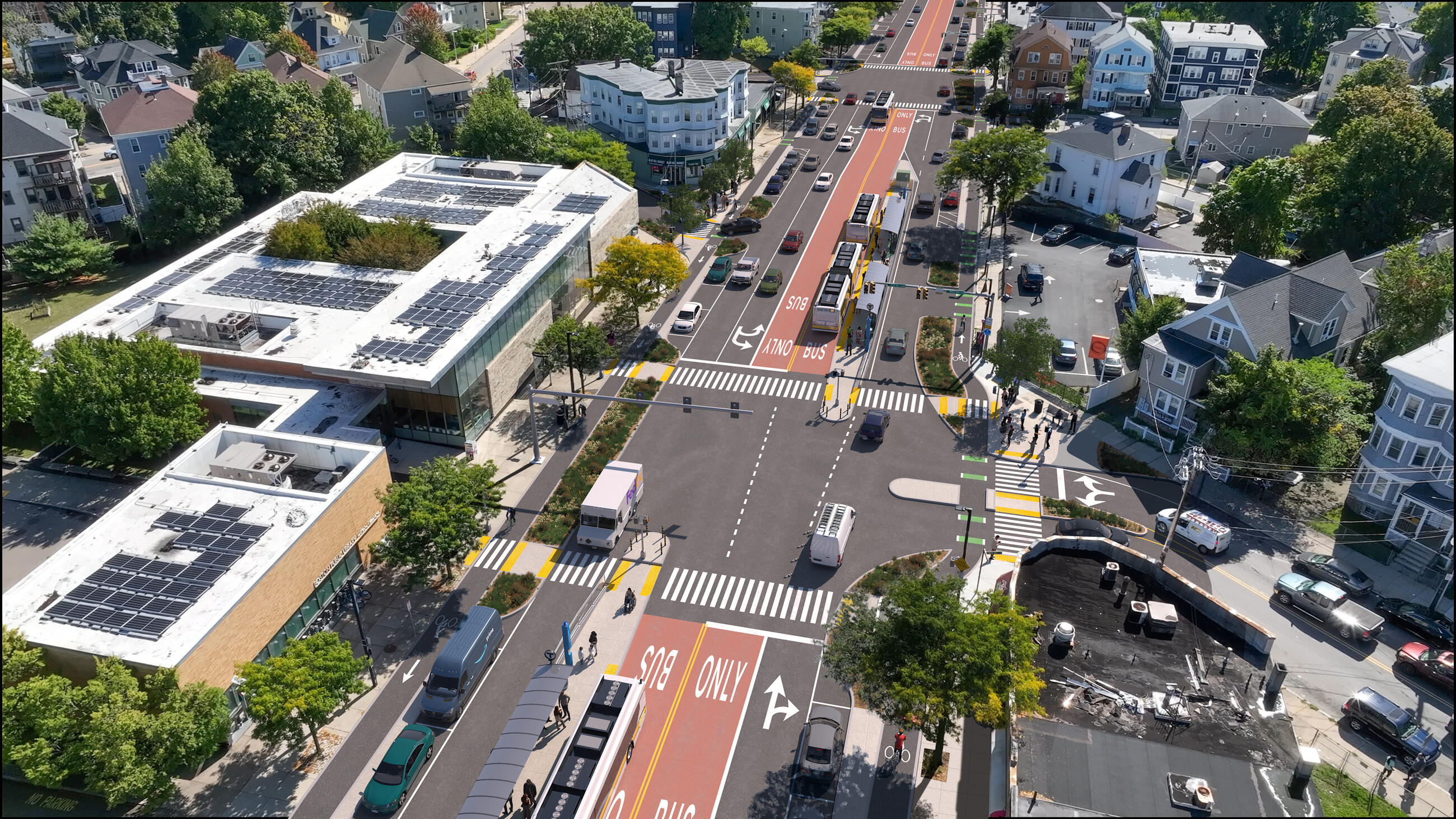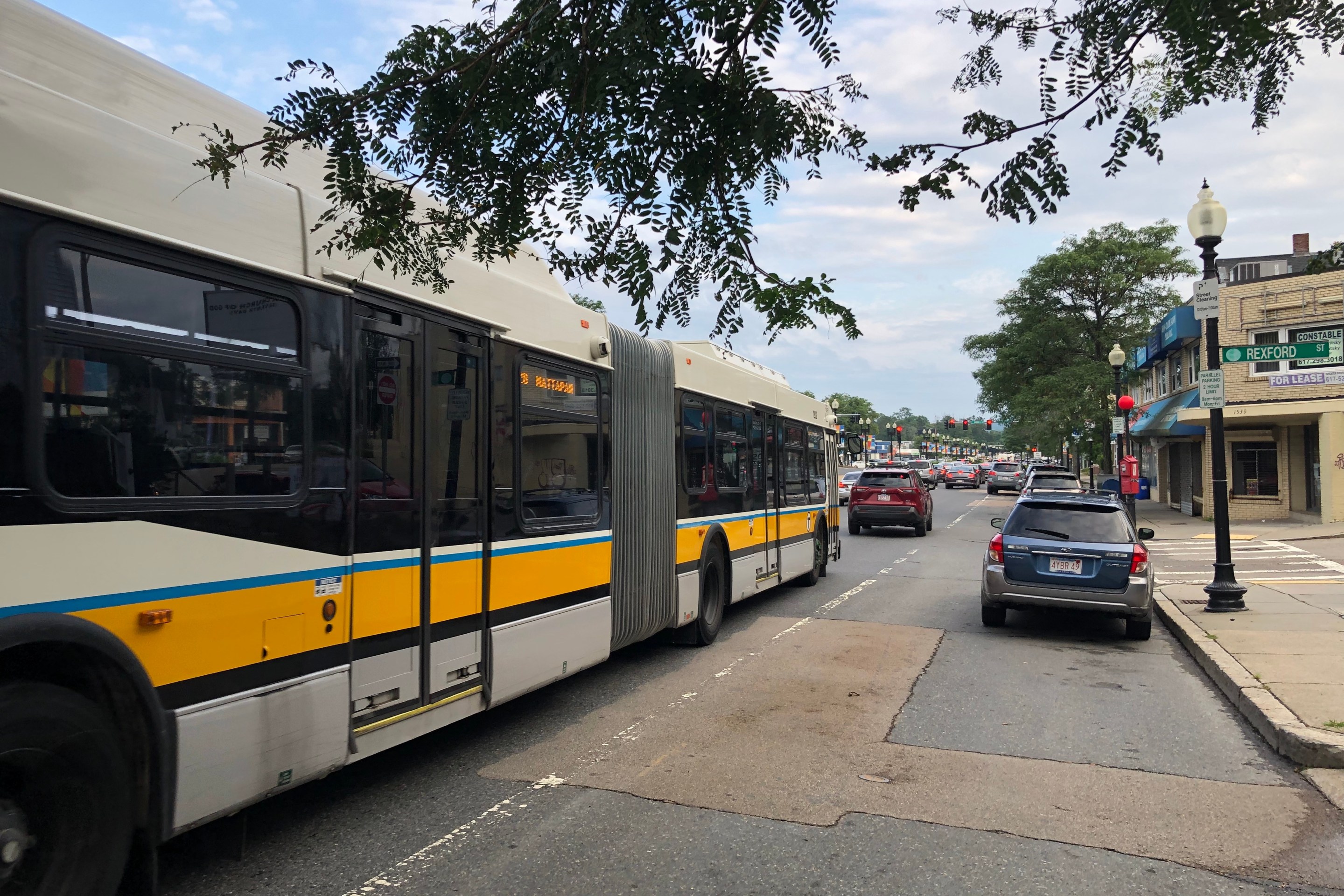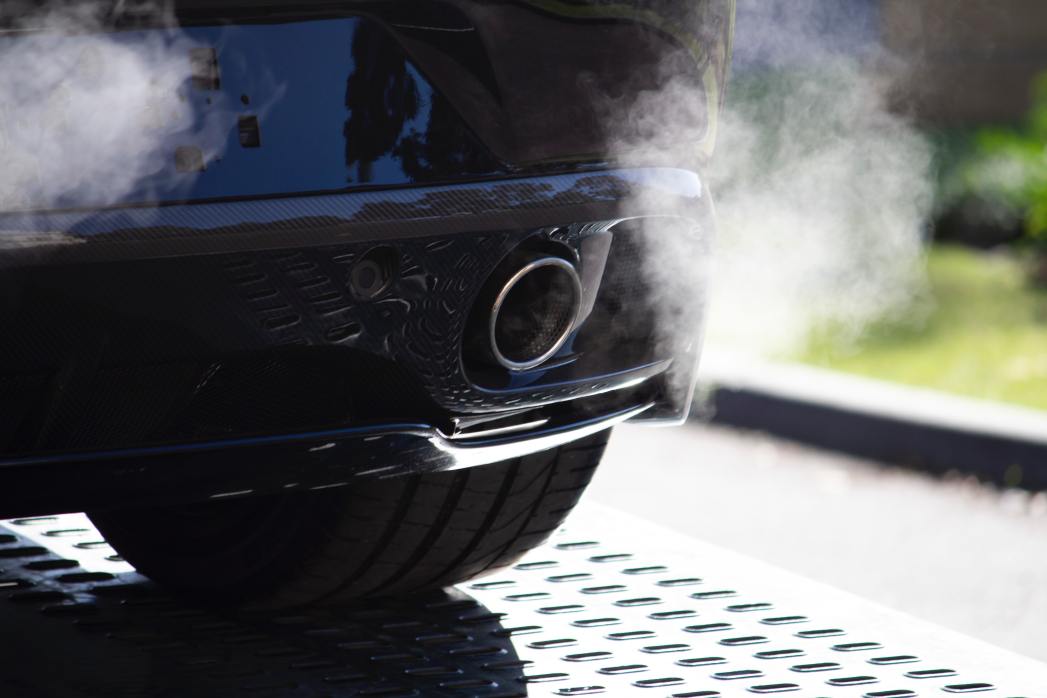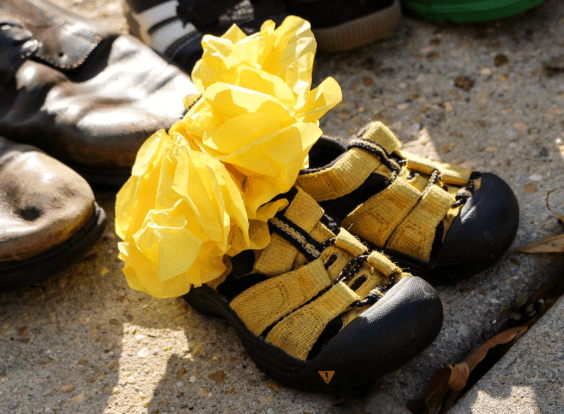On Wednesday evening, officials from MassDOT and the City of Boston hosted a virtual public meeting to discuss their latest plans to reconfigure the Sullivan Square rotary and Rutherford Avenue - a project that would reduce the number of car lanes on Rutherford Avenue to make room for widened sidewalks, new open spaces, and a new, physically-protected bike route between the Charles and Mystic Rivers.
There's no doubt that the new design would be a significant upgrade for the crumbling, 10-lane-wide eyesore that divides Charlestown. But some transit advocates worry that the current design, which does not include a dedicated busway for a potential Silver Line extension, might be a missed opportunity for the region to create a new rapid transit connection between Everett and downtown Boston.
"The redesign of Rutherford Avenue is a once in a generation opportunity to plan for the future we want, not the future we're afraid of," wrote Julia Wallerce, Boston program manager for ITDP and a leading advocate for dedicated busways, in an email to StreetsblogMASS before last night's meeting.
"It is critical that we embrace street designs that prioritize moving more people in fewer vehicles, that make space for greenery, and that connect people safely and reliably to where they need to go. Including dedicated bus lanes on the full Rutherford Ave. corridor - connecting riders from Everett, Malden and Chelsea with opportunities in downtown Boston (and beyond) - is an effective way to do this."
Erik Maki, a project consultant from Tetra Tech, stressed that there's ample room on Rutherford Avenue - even after some lanes are removed - to provide bus lanes in the future.
"We’re working with MBTA planning staff and Boston Transportation Department staff to future-proof this corridor by reserving space for future bus stops. It wouldn’t be a center-running BRT… but if there are side-running buses, we’ve got all the space we want for bus stops, we can place bus stops wherever we want within this open space we're creating.”
The plans would also extend planned bike and bus lanes being built as part of the North Washington Street Bridge replacement project, with a dedicated southbound bus lane for the MBTA's route 111:
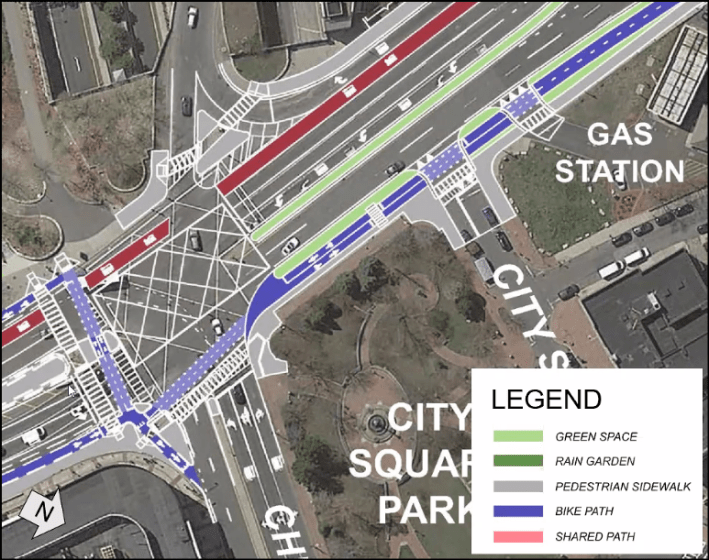
Although it would be narrower, with more crosswalks and dedicated bike infrastructure, there's little doubt that the new Rutherford Avenue will still be a high-speed, multi-lane highway.
Existing underpasses at Austin Street and through Sullivan Square would remain, albeit with fewer lanes, to allow through-running vehicles to drive through the corridor at high speeds without stopping, and the reconfiguration of the Sullivan Square traffic circle has been designed to give northbound drivers a more direct route to the Interstate 93 ramps on Mystic Avenue in Somerville.
The project still needs to refine its designs before it can go under construction, but officials at last night's meeting forecasted that the $175 million project could get underway in the spring of 2023, and work would continue for four years.
Plans to rebuild Rutherford Avenue and turn it into a more pedestrian-friendly boulevard have been in the works for over a decade. Ten years ago, a number of Charlestown residents actually wanted the state to maintain Rutherford in more or less its current form, with ten lanes of traffic.
Last night, though, the majority of public commenters either asked for dedicated bus lanes, or asked MassDOT to make the roadway even narrower in order to accommodate a future with less car traffic.
